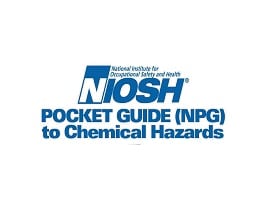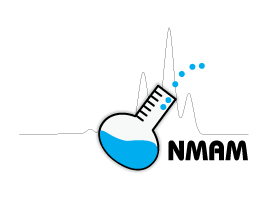Phosphine

Overview
CAS No. 7803-51-2
Phosphine (PH₃) is a colorless, flammable, and explosive gas at room temperature that smells like garlic or decaying fish. Exposure to phosphine may cause, nausea, vomiting, stomach pain, diarrhea, thirst, muscle pain, difficulty breathing, and fluid in the lungs. Higher exposures and long-term exposure may cause serious harm. Workers may be harmed from exposure to phosphine. The level of exposure depends upon the dose, duration, and work being done.
Phosphine is used in many industries. It’s used to kill insects and rodents in stored grain and tobacco. Some examples of workers at risk of being exposed to phosphine include the following:
- Factory workers that make electronics
- Workers in plants that make rat poison
- Pest control workers who use it to control for rats
NIOSH recommends that employers use Hierarchy of Controls to prevent injuries. If you work in an industry that uses phosphine, please read chemical labels and the accompanying Safety Data Sheets for hazard information. Visit NIOSH’s page on Managing Chemical Safety in the Workplace to learn more about controlling chemical workplace exposures.
The following resources provide information about occupational exposure to phosphine. Useful search terms for phosphine include “hydrogen phosphide,” “phosphorated hydrogen,” “phosphorus hydride,” and “phosphorus trihydride.”
NIOSH Chemical Resources
Related NIOSH Resources
- NIOSHTIC-2 search results for phosphine—NIOSHTIC-2 is a searchable database of worker safety and health publications, documents, grant reports, and journal articles supported in whole or in part by NIOSH.
- NIOSH Worker Health Study Summaries—NIOSH conducts research to prevent illnesses and injuries in the workplace.
Selected Publications
- Emergency Response Safety and Health Database: Phosphine—The Emergency Response Safety and Health Database contains accurate and concise information on high-priority chemical, biological and radiological agents that could be encountered by personnel responding to a terrorist event.
- NIOSH Alert: Preventing Phosphine Poisoning and Explosions During Fumigation—DHHS (NIOSH) No. 99-126. This case shows the hazards to workers who handle or work near phosphide fumigants.
- Documentation for Immediately Dangerous to Life or Health (IDLH) Concentrations: Phosphine—The IDLH documents the criteria and information sources that have been used by NIOSH to determine immediately dangerous to life or health concentrations.
- Occupational Safety and Health Guideline for Phosphine—This guideline helps stakeholders conduct effective occupational safety and health programs.
Related Resources
- ATSDR Medical Management Guidelines: Phosphine
- ATSDR ToxFAQs: Phosphine
- EPA Chemistry Dashboard
- EPA Air Toxics: Phosphine
- EPA Pesticide Fact Sheet: Phosphine
- EPA Integrated Risk Information System: Phosphine
- NLM Hazardous Substance Data Bank: Phosphine
- NLM Haz-Map: Phosphine
- OSHA Hazard Communication
- New Jersey Hazardous Substance Fact Sheets: Phosphine
International Resources
- European Chemicals Agency (ECHA): Search for phosphine
- Gestis Substance Database
- ILO International Chemical Safety Card: Phosphine
- International Program on Chemical Safety (PIM 865): Phosphine
- IPCS INCHEM: Phosphine
- OECD Global Portal to Information on Chemical Substances
- WHO (Health and Safety Guide No. 28): Phosphine



